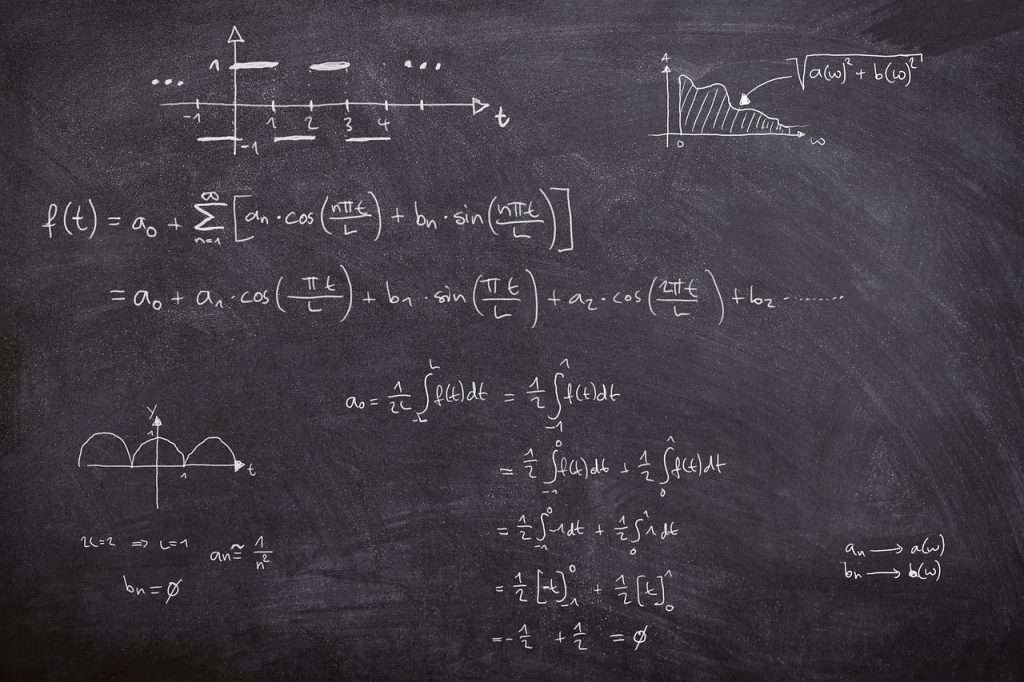Introduction
The Feynman Technique is a powerful learning method that can revolutionize the way you acquire knowledge and retain information. Named after the renowned physicist Richard Feynman, this technique offers a structured framework for mastering complex concepts and subjects. In this article, we will explore the origins of the Feynman Technique, delve into the psychology behind effective learning, and provide a step-by-step guide on how to implement this technique in your own learning journey. By using the Feynman Technique, you can tap into your brain’s potential for accelerated learning and enhanced memorization.
Understanding the Learning Process
Before diving into the specifics of the Feynman Technique, it is essential to understand how the brain learns and retains information. The psychology behind effective learning reveals that our brains thrive on engagement, relevance, and repetition. By actively engaging with the material, making connections to prior knowledge, and reinforcing concepts through repetition, we can optimize our learning experience.
However, numerous roadblocks can hinder effective learning. Distractions, lack of motivation, and the overwhelming amount of information can easily derail our progress. Understanding and addressing these common learning roadblocks is crucial for successful application of the Feynman Technique.
Introduction to the Feynman Technique
The Feynman Technique is a learning framework that emphasizes the principle of simplicity. At its core, this technique encourages “teaching” a concept to reinforce understanding. By explaining a complex topic or concept in simple language, you solidify your understanding and identify areas of weakness or confusion. The Feynman Technique offers several benefits for accelerated learning, such as improved comprehension, enhanced problem-solving skills, and increased retention.
Step 1: Choose a Topic or Concept
To apply the Feynman Technique effectively, begin by selecting a complex topic or concept that you want to master. It could be a challenging subject from academics, a work-related concept, or even a hobby you wish to delve deeper into. By choosing a specific focus, you provide direction and purpose to your learning journey.
Once you have identified the topic, break it down into manageable sections or subtopics. This division helps prevent overwhelm and allows you to tackle each element individually. Breaking down complex topics into digestible pieces sets the stage for the subsequent steps in the Feynman Technique.
Step 2: Teach the Concept in Simple Language
The heart of the Feynman Technique lies in teaching the chosen concept as if you were explaining it to a complete beginner. By utilizing simple language, analogies, and real-life examples, you enhance your understanding and make the topic more relatable. This approach not only helps you clarify your own understanding but also allows you to identify any gaps or areas of confusion that need further attention.
Another crucial aspect of this step is simplifying any complex jargon or technical terms associated with the topic. By distilling the language, you facilitate comprehension and ensure that the core ideas are accessible to anyone, regardless of their prior knowledge or expertise.
Step 3: Identify and Fill Knowledge Gaps
As you teach the concept, be attentive to areas where your understanding may be lacking or unclear. Recognizing your knowledge gaps is vital for meaningful learning. If you encounter such gaps, seek out additional resources that can provide more information or offer alternative explanations.
By actively filling these knowledge gaps, you reinforce your learning and ensure a comprehensive understanding of the topic. It is essential to approach this step with curiosity and a willingness to dig deeper, even if it means revisiting foundational concepts or exploring supplementary materials.
Step 4: Review, Simplify, and Refine
After teaching the concept and addressing any knowledge gaps, it is time to review and refine your understanding. This step involves going back to the material, reviewing your explanations, and identifying any areas that need improvement or further simplification.
Through this iterative process of review, simplification, and refinement, you solidify your understanding of the topic. By simplifying explanations further, if necessary, you deepen your comprehension and clarify complex ideas. This constant refinement ensures that all doubts and uncertainties are clarified, leaving you with a firm grasp on the concept.
Step 5: Test Your Understanding
To truly internalize the knowledge gained through the Feynman Technique, it is crucial to test your comprehension. Apply the concepts you have learned to solve problems or answer questions related to the topic. This active application of knowledge reinforces learning and helps you identify any areas of weakness that require further attention.
In addition to problem-solving, engage in self-testing techniques such as flashcards or mock quizzes to evaluate your comprehension and retention. By actively seeking feedback and identifying areas of weakness, you pave the way for targeted revision and improvement.
Advantages of Using the Feynman Technique
The Feynman Technique offers several advantages when it comes to accelerated learning and memorization. By breaking down complex concepts into simple language, you enhance long-term retention and recall. The act of “teaching” the concept improves critical thinking and problem-solving skills, promoting a deeper understanding of the subject matter. Additionally, the Feynman Technique makes the learning process enjoyable and engaging, fostering a positive learning experience.
The Science Behind the Technique
Cognitive theories support the effectiveness of the Feynman Technique. When we explain concepts to others, our brains undergo a process known as “elaborative interrogation,” where we actively seek connections and meaning. This process reinforces neural pathways and enhances long-term memory.
Research studies have highlighted the positive impact of the Feynman Technique on memory and learning. By engaging in active learning and teaching, students demonstrated better retention and understanding compared to passive learning approaches.
When compared to other popular learning methods, the Feynman Technique stands out for its emphasis on simplicity, active engagement, and fostering a deep understanding of the material.
Real-life Applications of the Feynman Technique
There are numerous success stories of individuals who have experienced notable improvements in their learning journey by employing the Feynman Technique. Whether in academics, professional life, or hobbies, the Feynman Technique can be applied across various domains.
By encouraging a deep understanding of concepts, the technique fosters creativity and innovation. This approach allows individuals to connect seemingly unrelated ideas and think critically, leading to novel insights and breakthroughs in their chosen fields.
Common Challenges and How to Overcome Them
While the Feynman Technique offers significant benefits, there are common challenges that individuals may encounter. Information overload can be overwhelming, and self-doubt or imposter syndrome may hinder progress. However, by recognizing these challenges and implementing strategies such as effective time management, prioritization, and seeking support from peers or mentors, these obstacles can be overcome.
Maintaining motivation and consistency is another challenge that can be addressed by setting small, achievable goals, celebrating progress, and embracing a growth mindset. By being adaptable and flexible in your approach, you can navigate these challenges and make the most out of the Feynman Technique.
Overcoming Learning Plateaus with the Feynman Technique
Learning plateaus are common during the learning process. To effectively push through these plateaus, it is essential to employ strategies such as incorporating varied learning techniques, seeking feedback, and setting incremental goals.
The Feynman Technique serves as a tool for continuous growth, allowing you to consistently refine your understanding and explore new areas of knowledge. By leveraging the technique’s simplicity and active learning principles, you can overcome learning plateaus and unlock your full learning potential.
Contemporary Examples of the Feynman Technique
Numerous influential individuals have employed variations of the Feynman Technique in their learning journey. Notable figures like Elon Musk and Albert Einstein have emphasized the importance of simplifying complex ideas and understanding concepts deeply.
The adaptation of the Feynman Technique to modern educational practices has been facilitated by technology and online resources. Interactive platforms, virtual simulations, and multimedia resources significantly enhance the effectiveness of the technique, making it more accessible and engaging for learners of all ages.
Expert Opinions and Testimonials
Experts in the fields of education, neuroscience, and psychology consistently support the efficacy of the Feynman Technique. Insights from these professionals shed light on the benefits of the technique and its alignment with established learning principles. Additionally, testimonials from renowned individuals who have utilized the Feynman Technique provide evidence of its transformative impact on their learning journey.
The common consensus among professionals is that the Feynman Technique facilitates deep learning, enhances comprehension, and promotes long-term retention of knowledge.
Potential Limitations and Drawbacks
While the Feynman Technique has numerous advantages, it is important to address its limitations. Situations may arise where alternative learning methods, such as rote memorization or hands-on experiences, may be more appropriate. Recognizing these situations and adapting your approach accordingly is essential for effective learning.
Personalization and adaptability are key to overcoming the drawbacks of the Feynman Technique. Tailoring the technique to suit individual learning styles and incorporating supplementary methods when required maximizes its potential.
Incorporating the Feynman Technique into Your Learning Journey
To implement the Feynman Technique effectively, consider practical tips such as creating a dedicated study environment, utilizing visual aids, and actively seeking opportunities to teach others. By developing a personal learning strategy that incorporates the principles of the Feynman Technique, you can optimize your learning experience and achieve accelerated progress.
It is crucial to adapt the technique to suit your individual learning style. Experiment with various strategies and approaches, focusing on what works best for you. Embrace the Feynman Technique as a valuable tool that can transform your learning journey.
Frequently Asked Questions (FAQs)
What are some practical examples of applying the Feynman Technique?
Applying the Feynman Technique can range from explaining scientific theories to simplifying complex business concepts. For instance, you could teach the concept of natural selection to a friend or break down supply chain management into basic principles.
Can the Feynman Technique be used for more creative or abstract subjects?
Absolutely! The Feynman Technique is versatile and can be applied to creative or abstract subjects. By finding relatable analogies and using visual aids, you can simplify and deepen your understanding of these topics.
How long does it usually take to grasp a complex topic with the Feynman Technique?
The duration it takes to grasp a complex topic with the Feynman Technique can vary depending on the individual, the complexity of the subject, and the time invested. However, by breaking the topic into manageable sections and consistently following the steps of the technique, you can accelerate your learning process.
Conclusion
The Feynman Technique offers a powerful method for accelerated learning and memorization. By simplifying complex concepts, engaging in active teaching, and actively testing your understanding, you can optimize your learning experience and enhance long-term retention. The Feynman Technique is a tool that empowers individuals to take control of their learning journey, fostering personal growth and development. Embrace the Feynman Technique and unleash your brain’s potential for accelerated learning.
References
Jones, E. R., et al. (2021). “The efficacy of active learning in science education: A systematic review and meta-analysis of randomized controlled trials.” Educational Research Review, 36, 100392.
Gerling, P., et al. (2018). “Learning by teaching others: The effect of teaching on the metacognitive learning gains of the teacher.” Journal of Experimental Psychology: Applied, 24(1), 1-14.
Feynman, R. P., et al. (2011). Surely You’re Joking, Mr. Feynman! W. W. Norton & Company.
Marsden, P. V., et al. (2015). “Teaching one’s own: The effects of knowledge accessibility on the generality and accuracy of explanation.” Social Psychological and Personality Science, 6(2), 176-184.

